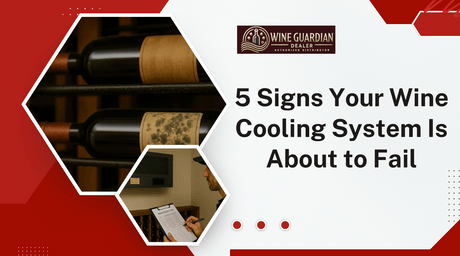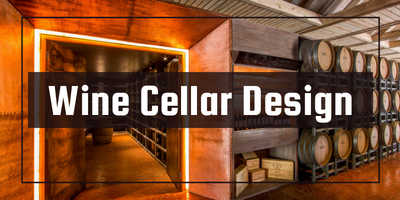
5 Signs Your Wine Cooling System Is About to Fail
Don’t wait for a costly surprise. Wine Guardian Dealer breaks down the top 5 signs your wine cooling system may be failing — and how to fix it before damage...
Jim Hopper
In Stock & Ready to Ship – Order Your Wine Cooling System Today!
Free Wine Cellar Expert Consultation | 📞 Call 1-800-260-1712
Start with a free expert consult—cooling system sizing, racking options, and no upsells.

Build your dream wine cellar—without costly mistakes or guesswork.
By Jim Hopper, Wine Cooling Expert

Building a wine cellar is more than just framing, drywall, and adding some racks — it’s a precision-controlled environment designed to preserve fine wine for decades. And when the technical details aren’t fully understood? Costly mistakes follow.
This guide is part of our broader series on flawless cellar design — Start with the full Wine Cooling System Planning Guide.
From improper insulation to choosing the wrong cooling unit, even experienced contractors can run into trouble if they treat wine cellars like ordinary rooms. The good news? These issues are completely avoidable with the right knowledge and planning.
In this guide, we’ll break down:

Most contractors default to sizing HVAC systems by square footage — but wine cellars don’t play by those rules. Cooling systems must be based on total heat load, not room size alone.
Understand system sizing in our guide on how to size a wine cellar cooling unit.

A beautifully built cellar can still fail if the insulation strategy is wrong. A missing or misplaced vapor barrier leads to rot, mold, and major repair bills.
See why vapor barriers make or break a wine cellar.
Micro-Story: A contractor in Colorado omitted the vapor barrier. Within four months, mold formed and the cellar required a full rebuild.

Ventilation and ductwork are often afterthoughts in cellar projects — and that’s a mistake.
Learn more in our guide on wine cooling mistakes that cost you thousands.

Temperature is only half the equation — humidity makes or breaks wine preservation.
Explore the importance of humidity control in wine cellars
Do you really need a humidifier? Read this first

Choosing the wrong system leads to poor performance, high noise, and system strain.
Compare options in our ducted vs split vs self-contained guide
Planning a glass-walled cellar? Read this first

Discover what it’s like to work with a wine cooling expert

A contractor in Napa Valley originally spec’d a self-contained unit for a 900-bottle cellar. After reviewing the design with Wine Guardian Dealer, they switched to a ducted system with humidification. The result? Silent operation, stable conditions, and zero mold.
👋 Got questions? Need help picking the right wine cellar cooling system for your space?
Our experts at Wine Guardian Dealer are ready to help you every step of the way.
📞 Call us today at 1 (800) 260-1712 for your FREE Cooling Consultation!
📧 Email us at support@wineguardiandealer.com
🛒 Shop Wine Guardian Cooling Systems
Base it on total heat load, not just square footage. Use a calculator or expert consult.
Closed-cell foam or rigid board (R-30). Always use a vapor barrier on the warm side.
It protects corks and labels and prevents mold. Aim for 50–70% RH.
No. You need wine-specific cooling for precise temperature and humidity control.
🛒Shop our most-loved Wine Guardian cooling systems today.
🛠️Protect your wine with the most trusted systems on the market.
❤️Tested, reviewed, and loved by serious collectors like you.